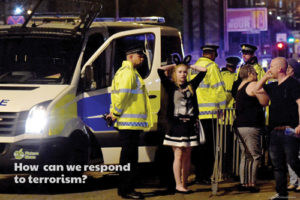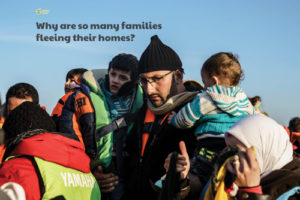by Katie Harrison
Early Years educational expert and founder of Picture News
Children are naturally interested in the world around them and what’s going on right now. It can therefore be empowering for children to learn about the world and to realise that they are a big part of it.
What’s going on in the world can provide many real-life learning opportunities for children that they not only find interesting but can also challenge their perceptions of the world around them. Current affairs can also provide many opportunities for developing respect and empathy towards others.
But teachers are stretched, schools are under-resourced and teaching and talking about current affairs is often neglected. Teachers have considerable curriculum pressures and because the news is always changing and developing, they simply do not have time to create their own plans
and resources.
At home, di scussing the news might not be a part of everyday conversations. The increased use of technology might mean there are fewer opportunities for having a chat and as a lot of the news can be quite negative, many parents may want to shield and protect their children from it.
scussing the news might not be a part of everyday conversations. The increased use of technology might mean there are fewer opportunities for having a chat and as a lot of the news can be quite negative, many parents may want to shield and protect their children from it.
Having discussions with children, albeit at times difficult, is important. It’s what helps children to learn, to grow and to understand the world we live in.
Child-friendly news is important because it makes information accessible and encourages children to think critically about events and key issues.
Alongside the stories we hear or read about, another very accessible way for children to learn about the news is through images. Pictures tell a story; they lead to intrigue and provide a context in which we can discuss and learn about what’s happening.
Learning about the news gives children plenty of opportunities to relate and empathise with people in circumstances very different to their own. Thinking about something that’s happening to someone else in the world connects them to a shared humanity.
It’s crucial that we help young people grow up with understanding and they are informed citizens with enquiring minds that question everything.
There are many ways to do this and using pictures is particularly powerful because they naturally stimulate discussion, get children asking ‘big questions’ and encourage further dialogue.
Top tips for talking to children about sensitive news:
• Honesty is the best policy. Tell the truth! Lies will lead to mistrust and confusion. The truth usually comes out in the end anyway!
• Don’t talk too much. Children need time to process information.
• Stay as calm as possible.
• Don’t let the topic become the elephant in the room.
• Provide reassurance and model good self-care by being an emotional role model.
• Understanding a bit about how children perceive the world in each phase of their development helps you deliver information about it in the most age-appropriate way.
Katie Harrison is an Early Years educational expert and founder of Picture News – a new service for schools helping them teach children about the news. Find out more at www.picture-news.co.uk











